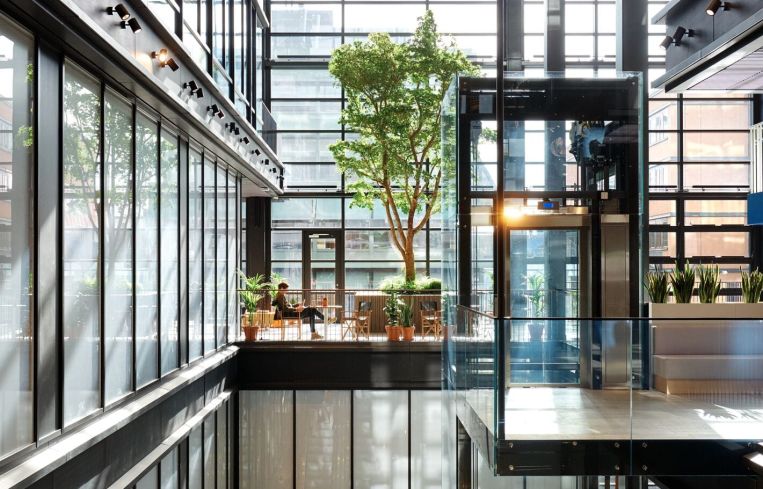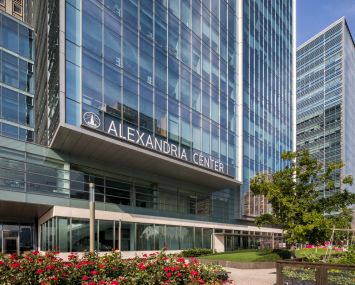Presented By: WeWork
As Large Companies Adapt to a Flexible Future, WeWork Steps Up

As COVID-19 causes businesses to rethink their real estate footprint, WeWork stands to play an expanded role. With more than 3,500 large businesses located in its offices around the globe, WeWork has an unmatched level of interaction with a unique cross section of leading businesses, giving it a unique lens into how these companies are pursuing and implementing shifts across their portfolios.
Commercial Observer’s Partner Insights team spoke with John Lewis, WeWork’s head of Enterprise Sales, about how the world of work is evolving.
CO: It’s October, a full six months after the initial lockdowns in the US. What are the latest trends you’re seeing among your Enterprise members?
JL: There’s now a consensus that the future of work will include both office and remote options for employees. But the extent of each is still a very open question… so very few companies are making long-term decisions. In the meantime, most are planning for a meaningful return to offices in 2021, and therefore assessing whether they have enough space, whether that space is in the right place, and whether it’s designed appropriately for its future purpose.
CO: What are some of the common findings in these assessments?
JL: Most companies have more space than they need in the aggregate, but it’s concentrated in a single area, and is mostly designed for heads-down work, which can happen remotely. So these companies are preparing for a years-long portfolio reset that will include smaller hubs, more spokes, and far more space for socializing, collaborating and training on-sites. Employees tend to stay at companies where they have friends and where they’re developing professionally [WeWork/Aspen Institute’s Future of Work]. The office will play a big role here.
CO: Do you expect that these offices will be permanently supplemented by work from home?
JL: Remote, yes. But companies are realizing that working from home is a Band-Aid, not a long-term solution. Communication, creativity and balance are all compromised when people aren’t able to gather face to face [WeWork/Brightspot]. While these impacts have been well-documented, an equally troublesome topic is fairness. Parents, urbanites and the less affluent have a much harder time working from home… Over the course of many months or years, those disadvantages can absolutely lead to opportunity and income disparities. So companies are looking for remote options that give all employees the same, often much higher, productivity baseline [WeWork/Brightspot].
CO: Back to the offices themselves. Sublease supply has increased dramatically in recent months, is that hurting WeWork?
JL: We’re well-positioned against subleases in terms of both flexibility and flight to quality, and our deal flow right now is reflecting that. Ultimately, we’re in a position to solve for a requirement, be it size, timing, optionality or price, whereas the sublease value prop is closer to “more space, for longer than you want, but cheap.”
Our average term length with large users since COVID began has been 12 months, and most of these deals have included expansion or contraction options, renewal options, and as many as five to 10 WeWork All Access passes for each physical desk. Subleases rarely offer any of these terms, and certainly not all. Additionally, our portfolio was mostly built in the last 24 months so it looks, feels and performs better than second-generation sublease space. Overall, we can allow companies to be more conservative in deciding how much space and for how long, which are the most powerful cost levers of all, while also piloting a new hybrid model (Google “Hybrid” office news).
CO: New York City has been slowly coming back to life, with people returning to offices, going back to restaurants, etc. Talk about how WeWork is playing a role in getting New Yorkers back to work.
JL: As we’re seeing in restaurants and parks, New Yorkers are ready to get out of their apartments, provided they can do so safely. So for us, the first step was de-densifying our spaces, investing in air filtration, sanitization and personal protective equipment so that our members have peace of mind returning to work.
The second step was launching our WeWork All Access product, a monthly membership that unlocks access to not only our 60+ NYC locations, but nationwide as well. Employees can reduce their commute times and have flexibility in their workday while businesses can distribute their workforce thoughtfully and productively.
The last step is leveraging our portfolio to help organizations plan despite an uncertain future. We’ve helped companies ranging from e-commerce leaders to healthcare giants expand or extend their commitments to New York City, which gives us a lot of confidence both in our value proposition and in the city we call home.
To learn more about how WeWork is reimaging the office of tomorrow, visit wework.com/tomorrow


